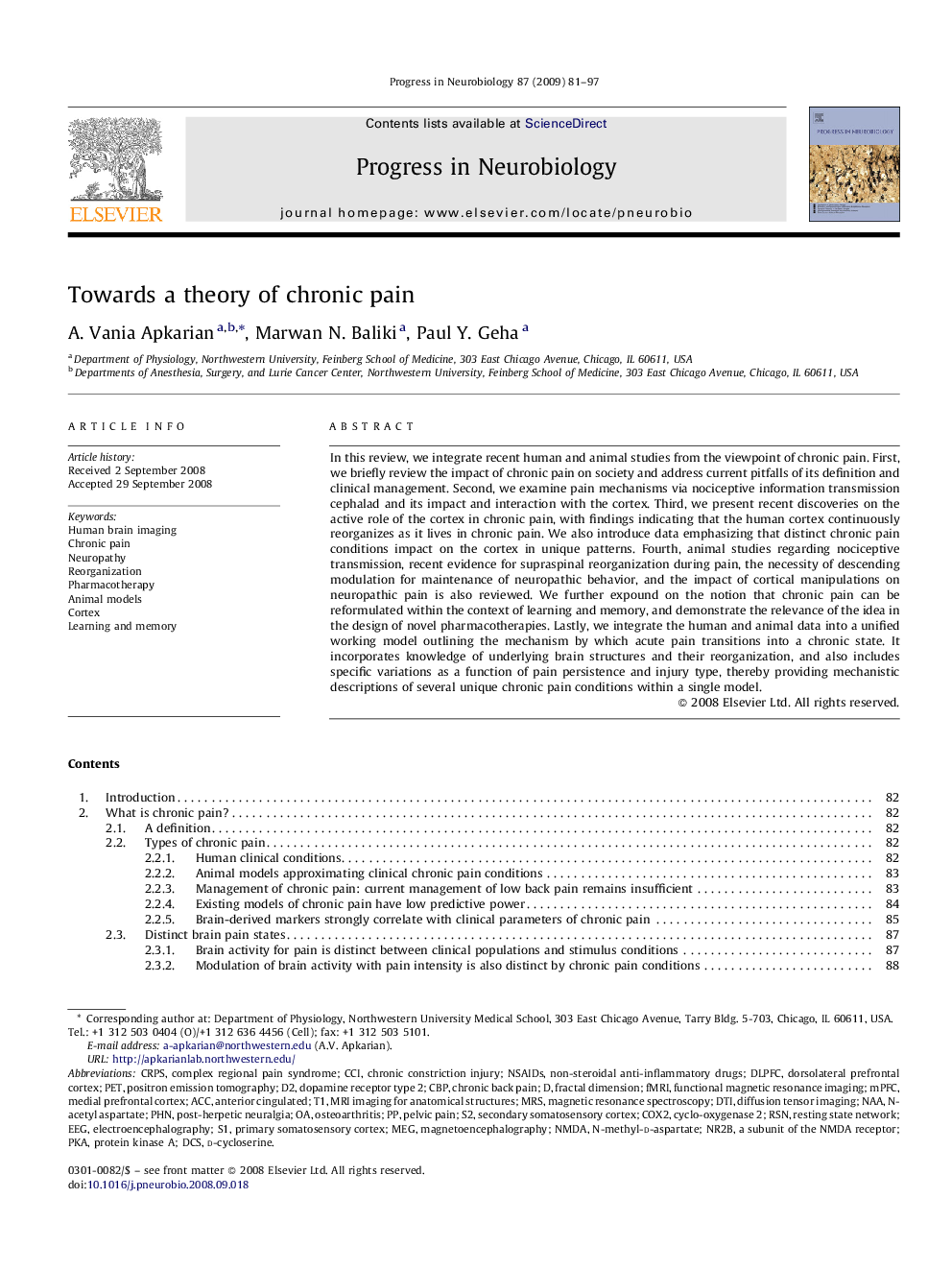| Article ID | Journal | Published Year | Pages | File Type |
|---|---|---|---|---|
| 4353829 | Progress in Neurobiology | 2009 | 17 Pages |
In this review, we integrate recent human and animal studies from the viewpoint of chronic pain. First, we briefly review the impact of chronic pain on society and address current pitfalls of its definition and clinical management. Second, we examine pain mechanisms via nociceptive information transmission cephalad and its impact and interaction with the cortex. Third, we present recent discoveries on the active role of the cortex in chronic pain, with findings indicating that the human cortex continuously reorganizes as it lives in chronic pain. We also introduce data emphasizing that distinct chronic pain conditions impact on the cortex in unique patterns. Fourth, animal studies regarding nociceptive transmission, recent evidence for supraspinal reorganization during pain, the necessity of descending modulation for maintenance of neuropathic behavior, and the impact of cortical manipulations on neuropathic pain is also reviewed. We further expound on the notion that chronic pain can be reformulated within the context of learning and memory, and demonstrate the relevance of the idea in the design of novel pharmacotherapies. Lastly, we integrate the human and animal data into a unified working model outlining the mechanism by which acute pain transitions into a chronic state. It incorporates knowledge of underlying brain structures and their reorganization, and also includes specific variations as a function of pain persistence and injury type, thereby providing mechanistic descriptions of several unique chronic pain conditions within a single model.
